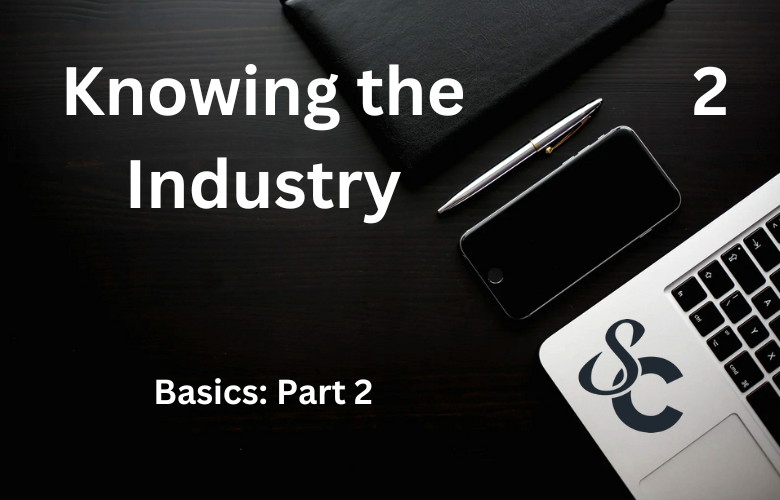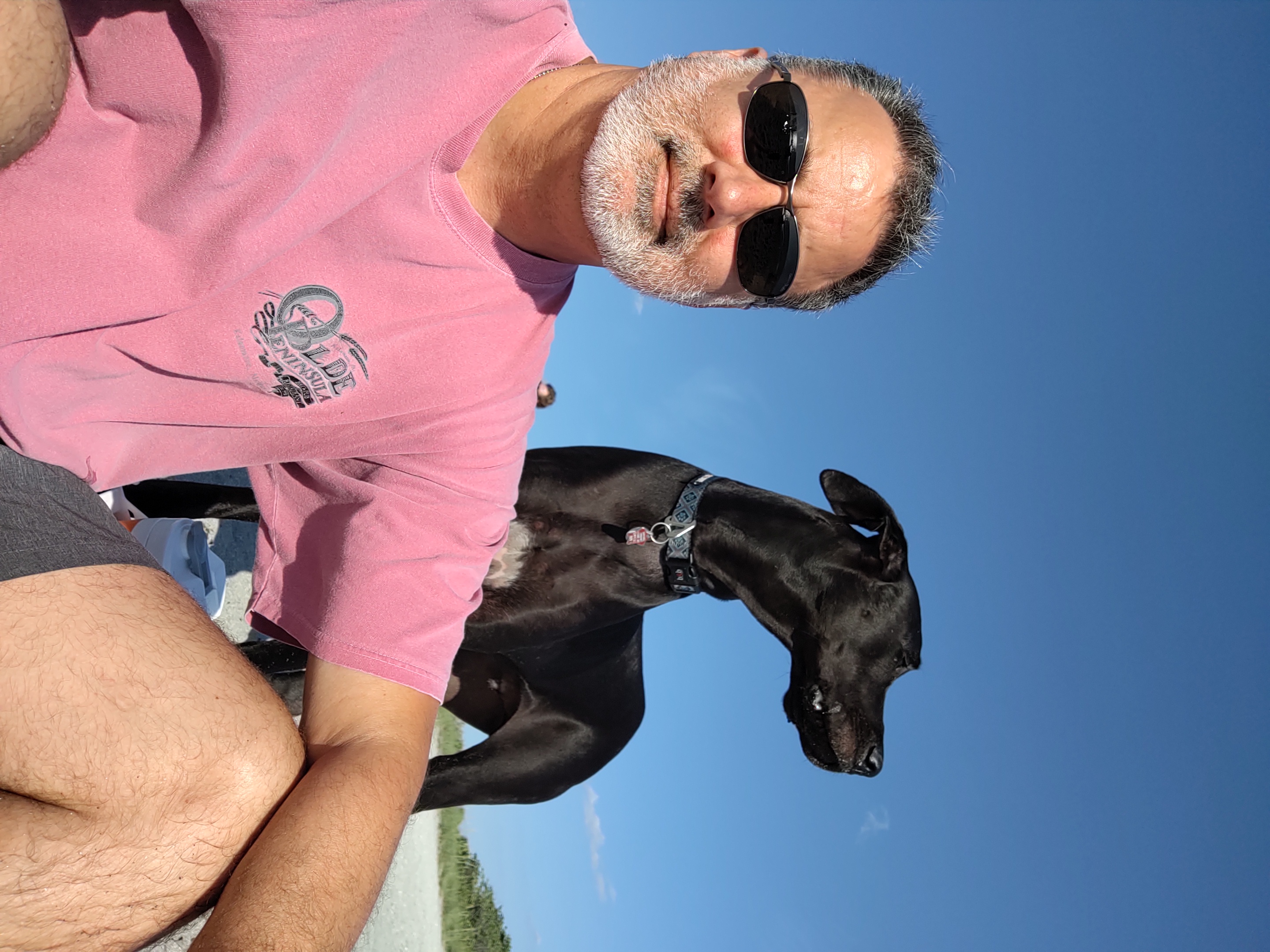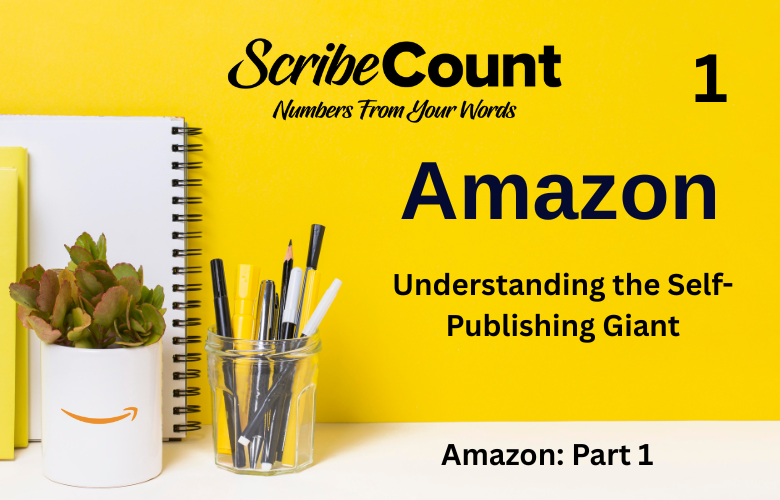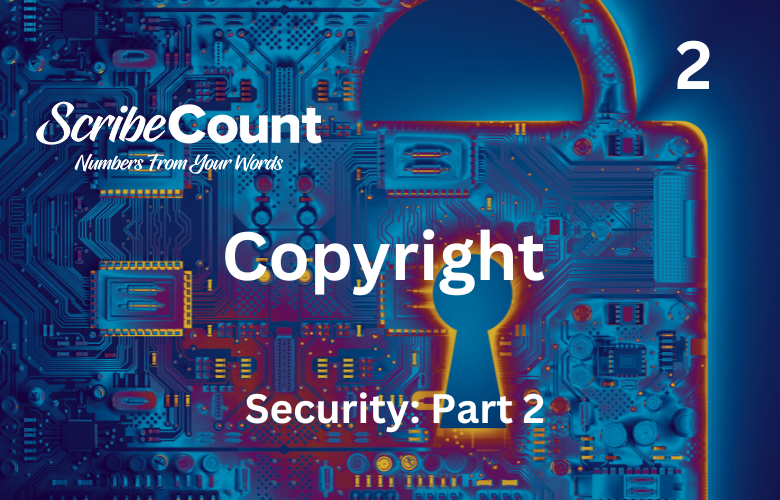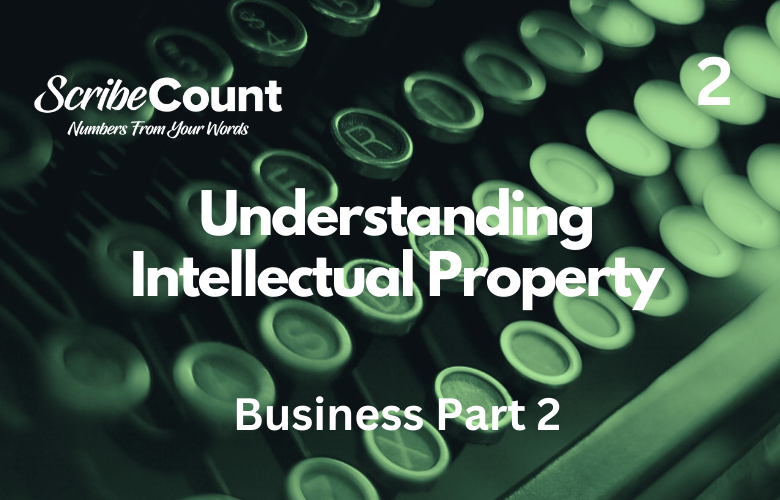Knowing the Industry
Before diving headfirst into the world of Independent Publishing, it's important to understand the publishing industry itself, how it has evolved since the arrival of the Kindle, and where you wish to place yourself within that system today.
To do so we’ll need to travel back in time a bit, back to 2007, when the publishing world was thoroughly disrupted by a young start-up company known as Amazon.
Knowing the industry starts with the world of Traditional Publishing. Before the advent of Indie or Self-publishing, it was the only option authors had for getting their work into the hands of millions of readers. Understanding Trade Publishing will highlight the pros and cons of self-publishing and allow you to make a truly informed decision as to which option is best for you.
Some History
Back in 2014, a full seven years after the introduction of the Kindle and Kindle Direct Publishing, we saw the birth of AuthorEarnings, a website created by best-selling author and self-publishing guru Hugh Howey. Along with a tech guy known only as Data Guy, he attempted to reveal what kind of money authors were really making. The site took snapshots of the Amazon rankings on a given day and then analyzed them to see what was actually going on in the world of indie publishing. Hugh's data raised quite a bit of controversy, with rebuttals coming from several trade-publishing supporters such as Mike Shatzkin, Dana Weinberg at DBW, and agents such as DonaldMaass calling the whole study such things as "incomplete", "a stellar example of what not to do", and saying that it "raises more questions than answers".
I'm not going to argue Hugh's numbers here. I feel they spoke for themselves and people twisted them to support whatever agenda they had at the time. One thing that I did notice in the many responses was the insistence by the trade-pub crowd that the numbers meant little, that it was simply not how the trade publishing world worked. They said this despite offering no data to support their argument. Regardless, they failed to see (or tactfully ignored) the main question that the reports attempted to answer; Is a new writer better off pursuing a trade-pub deal, or going it alone with self-publishing?
To understand this, it's important to understand how the publishers view the reader and the authors they employ. Publishers stopped viewing the reader as their customer long ago, the customer for the publishing industry is the bookstore. The reader is viewed as a persona, a variable to plug into an algorithm in an attempt to find the next 50 Shades of Grey.
So, from a Big Publishing House (BPH) point-of-view, what kind of reader are you?
Most would answer by genre; “I like Thrillers and Science fiction”. Trade-pub sees the reader in an entirely different way. To trade-pub, you the reader fall into one of three categories.
The Casual Reader
This is the reader who divides their entertainment time and money among several other different sources, be they TV, movies, or newspapers, in addition to books. They stick to authors they know, usually best-selling names, and rarely divert from them. Their busy lives and short supply of free time limit their reading to less than 12 books a year. Price is not much of an issue due to the low volume of books they purchase. They prefer Paperback and Hardcover or are late adopters of e-books. They are also the group least likely to try an unknown self-published author.
The Voracious Reader
This is the reader who spends his or her entertainment time and money on books and little else. They put one down and immediately shop for the next one. They make up the smallest percentage of the reading public but spend the most dollars per person by a large amount. Most were early adopters of the e-reader, and due to their reading appetites, they sought out lower-priced books. They are the group most likely to try an unknown self-published author.
The Defensive Reader
This reader prefers to get their entertainment from sources other than books, reading perhaps one or two a year at the most. However, they are by far the largest population of readers out there. They read mostly for social reasons; when the Casual Readers in their social group are all talking or posting about a book they will not hesitate to pick it up. They are the group most likely to be seen reading the hot book-of-the-moment, and also the ones telling the world via every social connection they have what it is they are reading, thus promoting it even further. The Defensive Reader is what makes a book a blockbuster. By their nature, they are nearly impossible to market to. The Defensive reader requires a Casual Reader to stimulate their reading/purchasing of a book.
Most industries would target the voracious consumer as they would logically be their most valued customer. If your product were candy bars this would be true. Books, however, are different in both flavor and ingredients. They require a significant amount of money to produce and a different recipe is needed every time. It is much more profitable to make one candy bar that everyone likes and sell it millions of times than it is to produce millions of different candy bars and sell one of each to millions of people.
As book prices rose, voracious readers found other means than buying new to feed their habit. Libraries, used bookstores, book swaps, etc. The problem here is availability. The book they want to read isn’t always on the shelf for purchase or to borrow. For example, for every reader who bought Stephen King's latest in either hardcover or paperback, there were probably fifty who didn't buy the book new yet read it anyway.
To test this, I visited my local library when King's latest book came out, I reserved it on the library waiting list, and was informed that I was number 234 in the queue. That means 234 people who wanted to read his latest book, but weren't willing to pay retail for it, were willing to wait behind hundreds of others. It's been several months now and I still have yet to receive a call telling me it is now my turn.
Enter the eBook
When low-priced eBooks became available, those readers started buying again since it was so cost-effective they could again afford to be voracious readers. Here is where Big Pub is making a big mistake, again. By slapping high prices on eBooks, they are discouraging this group. The Author Earnings reports proved that this "shadow market” was now being served by indie authors. But why would Big Pub do that?
Consider this quote from Mike Shatzkin, a well-respected industry pundit, made on his blog titled "Vendor-managed inventory: why it is more important than ever", April 23, 2013;
"Looking at the store's records for the month, 65% of the units sold were single units: one copy of a title. Only 35% were of books that sold 2 or more. (I didn't ask the question, but that would suggest that 80-90 percent of the titles that sold any copies only sold one.)
Then, the following month, once again 65% of the units sold were singles. But only 20-30 percent of them were the same books as had sold as singles the prior month. Upwards of 70% of them were different titles. And upwards of 70% of the ones that sold one the prior month didn't sell at all."
What Mike is describing is Casual Reader purchasing activity; a book a month and a different title each month.
If you combine this statement with the reader’s personalities, then add in the economics of book production and distribution, it's not hard to conclude that the targeted reader for the Big Publishing House, the reader they spend their marketing efforts trying to reach, is the Casual Reader. Once you realize this every baffling practice adopted by Big-Pub falls into place; the select list of big-name authors, the monthly new releases, the high cost of trade-pub ebooks, the purchased coop space, the limited marketing push they give to new authors, the six-month shelf life those books get, and the lack of marketing for the existing mid-list. It all makes sense now.
More importantly, it leads to this; There is an upper limit to how many Casual Reader Authors a publishing house can have at any given time.
Following this profit-maximizing strategy is the way they position themselves for the elusive blockbuster novel. This is the book that attracts the Defensive Reader, the reader who was the real target all along. Once this happens that book becomes pure profit for the publisher.
While the Casual Reader is the target for all Big-Pub marketing, the end goal is always the Defensive Reader that the Casual Reader cultivates. Whether that Defensive reader is driven to purchase by word-of-mouth, social networks, or just peer pressure, they are the trigger that produces the blockbuster. It's a trigger that Big-Pub cannot pull on its own. The Voracious Reader, and the authors they read, are viewed as the unfortunate cost of reaching the Casual Reader. The six-month trial period every new author/title gets is simply how long it takes Big-Pub to determine whether or not the Defensive Reader has come into play or not.
Trade-Pub lived in fear of losing the Casual Reader. If a Casual Reader were to become a Voracious Reader that would lead to fewer Casual Reader Authors being read, Big-Pub does not produce enough of them, and if they did, the cost of reading them all would be very high. If this were to happen it would reduce the chances of the blockbuster trigger being pulled. This is why Big-Pub regulates the release of Casual Reader Author's titles, slowing them down to a schedule that prevents the Casual Reader from becoming anything else. The Defensive Reader is an elusive animal, but their numbers are HUGE. 50 Shades of Grey did a lot to support this, most readers admitted that they had never read a book in that genre before, yet the book sold millions of copies. Why did they read it? Because everyone else was.
This is further supported by the hand-written note made by Carolyn Reidy, CEO of Simon and Shuster at the time, on the margin of an (printed) E-mail made to Eddie Cue of Apple regarding the Big 6-Apple price-fixing case of 2012. (This was an anti-trust case accusing Apple of conspiring with five of the six big publishing houses to raise eBook prices. Apple and the BPH’s lost)
"Higher prices slows Ebks/casual purchaser/keeps retailers/stops authors leaving"
The Apple/Big-6 case points to just how afraid the publishers were. Price was the defense of the collusion charge, but the real reason was simply that Amazon could do something that they could not; target the Voracious Reader.
The Disruption
To understand the impact of Amazon on the publishing industry we’ll need to go back even further in time.
In the beginning, Amazon was like most online businesses, they just had a more forward-thinking guy at the helm. He saw a future for books that they did not. Amazon was the first company that had a motivation to turn Casual Readers into Voracious Readers.
Jeff Bezos modeled Amazon around the idea that selling one unit each of a million products would make the same amount of money as selling a million units of one product. Books were the perfect product for this, particularly in digital format. The only thing he lacked was the means and the content. This led to the invention of the Kindle (the means) and the creation of Kindle Direct Publishing (the content). All Amazon needed to complete this trifecta was more content, a tsunami of it if you will, than the Big-6 were willing to produce.
The Big Publishing Houses now had a new fear as they had no way to copy or compete with this. If they joined Amazon (without the aid of collusion) they would lose a large degree of control (read; Pricing). Remember, Trade-Pub depended on the Casual Reader > Defensive Reader > Blockbuster Model. They count on the Grisham's, Patterson's, Brown's, and King's to keep them afloat and provide the funds necessary for them to throw mid-list spaghetti at the wall hoping for the next 50 Shades to stick.
To be fair, Amazon, and the self-publishers they enable, are doing the same thing. Most are also hoping to trigger a blockbuster. They are just doing so by way of the Voracious Reader > Defensive Reader> Blockbuster Model. The big difference was that while doing so the Indie Authors were keeping their copyright, maintaining complete control of their product, setting their own prices, publishing on their own schedule, writing what they wished to write, giving the readers longer than six months to discover them, and according to the data, making a lot more money while they do so.
On top of that, they had the Amazon store, which unlike a brick-and-mortar store was open 24 hours a day/7 days a week, stocked every title in the world, and would deliver their purchase to the reader in a matter of seconds.
Authors see the exit
As soon as writers realized that Big-Pub was not even looking for the next John Grisham, and was only looking for the next E.L. James, many stopped dealing with agents and editors entirely. They instead opened accounts with Kindle Direct Publishing, and went directly to their readers, leaving the unnecessary middleman of Big Pub behind.
For many, this was an easy decision. Why waste months on submissions and hand over 15% of a lousy advance to an agent, then wait a year or more for their book to get its six-month chance at the lottery, a lottery that didn’t even exist as many thought it did, when instead they could cut out the middleman and get their book into the hands of their readers in a fraction of the time? The mid-list authors currently under contract quickly fulfilled their deals and then opted for the indie route leaving their publishers without the spaghetti they needed to throw at the wall.
The Big Publishers now had an existential threat to their monopoly. What would they do when the quality writers were no longer submitting their work? What would happen when the successful self-published authors refused to be cherry-picked, turning down million-dollar offers, or culled, as one agent put it? Without content and a steady supply of fresh spaghetti to throw at the wall, where will they go?
Flash Forward a Decade
The publishing world is now divided into two camps: the old-guard world of Traditional Publishing, and the ever-evolving world of Independent Publishing. Both are doing just fine, although the Traditional Publishers have had to adapt quickly to stay relevant. They now compete with indies for ad placement, market reach, and genre dominance. Indie books now match those of trade-published books in both quality and appearance. The readers cannot tell them apart.
To keep their best authors and safeguard their market share many trade publishers have adopted the Hybrid deal, where the author retains the rights to their book in eBook format while signing the rights to their physical books over to the Trade Publishers. In most markets, eBook prices have stabilized with Trade eBooks still listing higher but indies rising to meet them. Formats and markets that were once out of reach are now accessible to indies. Audiobooks are now a format that indies can leverage. Foreign markets. Libraries. Big Box stores. Translations. All of these outlets are available to indie authors without the need of a trade publishing deal. This access widens more every year.
Further Disruption
Indie Authors are now disrupting the very platform that set them free. With the rise of website retailers like Shopify and WooCommerce and the aid of delivery services like BookFunnel and Story Origin, indie authors can now bypass Amazon and other sales platforms and sell their books directly to their readers. This allows them to evade the pricing restrictions imposed on them by the various platforms, keep 100% of the sale price, and ignore the pay-to-play system many of these platforms have developed. Indies are now even more independent. With nothing more than a website and online store, they can build direct relationships with their readers, market directly to them without the interference of an algorithm, and grow their readership on their own terms. In 2023 ScribeCount users with online stores reported as much as 1/3 of their sales coming to them through their own websites. Those numbers will only go up as more and more indies open their own online stores.
The Publishing Industry is still a $147 Billion dollar behemoth, but the world of Independent Publishing is taking a larger portion of that pie every year. The author who knows its history and understands the disruption that has already occurred, as well as the disruption that is currently taking place, will be better informed as to where to position themselves for the future.
There has never been a better time to be an Independent Author.
